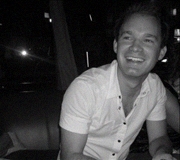Tutor HuntResources Ballet Resources
The Real Life Black Swan
Published article in New Books Magazine
Date : 09/01/2016
Author Information

Uploaded by : Guy
Uploaded on : 09/01/2016
Subject : Ballet
The Real Life Black SwanIn the Oscar-winning film Black Swan Nathalie Portman
portrayed ballerinas in a way that seems to have been taken as gospel. In the
film ballerina’s were not portrayed as people in charge of their own fate, more
as waifs pulled about by pushy mothers and lecherous choreographers. Artists who
exist solely in a world of sneering bitchiness, who constantly struggle to
psychologically overcome internal and external adversity. But my experience of
ballerina’s could not have been more different. In October I was fortunate to be funded by the Arts Council
to travel to St Petersburg and research the lives of the young ballerina’s
there for my second novel Letters from Yelena. In Russia ballerina’s are
bestowed with a glittering, iconic status which we probably have no real equivalent
of in England. In England pop stars are mollycoddled, put in strange mansions
in suspicious competitions and put on insecure pedestals, but they rarely
create work of any real resonance, unless you’ve deliberately skewed your
perceptions in some way to allow them to. But in Russia a well-worn passage to
artistic brilliance does exist, despite how difficult it is to tread as a path.
Indeed a young girl’s first visit to the cities ballet is afforded great importance
as a rite of passage amongst the social elite there. Those successful in
achieving their goal are treated almost as almost demi-gods. At the world’s
most elite ballet school, The Vaganova, the ballerina’s are fiercely protected
from the outside world. Therefore having the opportunity to spend time with
them and talk about the idiosyncrasies of lives was a rare opportunity, and one
which I understand few men from the West have ever had. I was given an insight
into a world where military discipline, rather unusually, treads a path to
transcendence and expression, rather than the stifling of individual spirit. Although
a member of staff did concede that ballerina’s often experience psychological
difficulties later in life, and some struggle to start families and long-term
relationships, my experience of the ballerina’s was of formidably powerful
people, very different from Portman’s put-upon dancer who’s ready to shatter at
a single touch. The ballerina’s I met were fiercely committed to their art.
They had often committed to a life of dancing without knowing financially how
they could ever make it work. Many had travelled from distant countries to
dance at the Vaganova, some arriving in Russia without speaking a word of
Russian. But they had put their art first, and in time had developed the
strength to overcome the attendant problems. Unlike Portman’s beautiful but
burdened character, the dancers I met constantly emanated a love for their work,
no matter the circumstances. However, I could not help but feel that the shadow of the
country’s Soviet past cast a heavy shadow over the young pupils. In the past it
could be argued that the country had seen ballerinas as a resource to use at
their own discretion. A way of that the country could peacock its enviable
cultural richness to the world. Arguably, this kind of attitude comes at a
price. In a recent article in The Guardian, the famed ballerina Mariafrancesca
Garritano claimed her training at La Scala’s ballet school had pushed her to
anorexia. Certainly during the course of my research I saw ballerina’s existing
on a diet of half an orange, or even a garnished bouquet of salad leaves. On
the occasions I was able to talk with any they were keen to wolf down pizza’s
in a way Ms Portman certainly never did on screen. But despite these pressures,
I think The Black Swan massively oversimplified the personal resources and love
required to be a ballerina, and this was something I really wanted to
communicate in Letters from Yelena. In my book ballet comes with a price- as we
expect all art to do- but it ultimately offers Yelena an escape. It does not
crush her in fact in time it comes to arguably liberate her. Through the book
I wanted to make a point about how central art can be in our lives- how it does
not need to be peripheral, or even a luxury as Thatcher had it be. I wanted to
propose how art can offer a blueprint for alternative ways that we might live, how
it can illuminate a way out of even our most mundane problems. I wanted to use the
experiences I had gained in my own background, in which I trained as a
psychologist, to depict how someone could overcome great psychological
difficulty through art and be to create their own identity. In ‘The Black Swan’
art seemed to be seen as something of a dead end, and my experiences in St
Petersburg showed me how obtuse that view is. Nevertheless, as a writer I am acutely aware of how training
academies inevitably work mainly to achieve their own ends. They have often not
focused enough on the individuals that exist inside within their systems. They
must achieve their goals in order to perpetuate themselves. But not looking
after individuals within a systems seems short-sighted and counter-intuitive,
as it is those people which allow the systems to flourish in the long term.
These people ultimately will lead to the success or failure of these processes.
In the book I explore this theme using ballet as a metaphor. My time in the
Russian ballet opened my eyes in many ways. But if there iI was one of the
moderating panel who oversaw the introduction of the new Creative Writing ‘A’
Level in 2014. s one point I took with me, it is that art, and a love of art
can not only be central in our lives, but ultimately a salvation too.
This resource was uploaded by: Guy
